Authors: David Bordwell,Kristin Thompson
B0041VYHGW EBOK (79 page)
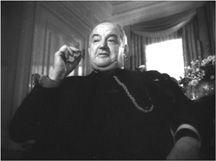
5.114 In
The Maltese Falcon,
Kasper Gutman is frequently photographed from a low angle, emphasizing his obesity.
Alternatively, certain framings in a film may stand out by virtue of their rarity. The ominously calm effect of the shot of the birds descending on Bodega Bay in Hitchcock’s film
The Birds
arises from the abrupt shift from straight-on medium shots to an extreme long shot from very high above the town (
6.32
and
6.33
). In a film composed primarily of long shots and medium shots, an extreme close-up will obviously have considerable force. Similarly, the early scenes of Ridley Scott’s
Alien
present few shots depicting any character’s point of view. But when Kane approaches the alien egg, we see close views of it as if through his eyes, and the creature leaps straight out at us. This not only provides a sudden shock; the abrupt switch to framings that restrict us to one character’s range of knowledge emphasizes a major turning point in the plot.
Apart from their narrative significance, framings can add a visual interest of their own. Close-ups can bring out textures and details we might otherwise ignore. We can see the surreptitious gestures of a thief in the medium close-up from Robert Bresson’s
Pickpocket
(
5.115
)
; a string of similar close shots makes up a dazzling, balletlike scene in this film. Long shots can permit us to explore vistas. Much of the visual delight of Westerns, of David Lynch’s
The Straight Story,
or of Werner Herzog’s documentary
Lessons of Darkness
(
5.116
)
arises from long shots that make huge spaces manifest. By including a range of information, the long-shot framing encourages us to explore details or discover abstract patterns
(
5.117
).
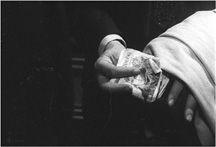
5.115 Bresson’s
Pickpocket.
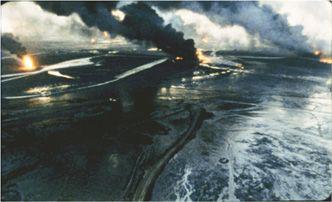
5.116 In
Lessons of Darkness,
helicopter shots give the desolate burning oilfields of Kuwait after the 1991 Gulf War an eerie, horrifying grandeur.
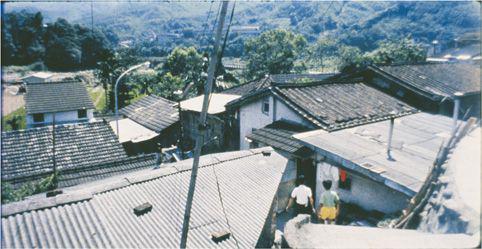
5.117 In Hou Hsiao-hsien’s
Summer at Grandpa’s,
the boy from the city visits his disgraced uncle, and the neighborhood is presented as a welter of rooftops sheltering a spot of bright red.
CONNECT TO THE BLOG
One way to add visual interest is to shoot straight into the rear plane of the setting, as we explain in “Shotconsciousness.”
Our eye also enjoys the formal play presented by unusual angles on familiar objects
(
5.118
).
In
La Passion de Jeanne d’Arc,
the upside-down framings
(
5.119
)
are not motivated as a character’s point of view; they express the frenzy of the massacre of the witnesses to Jeanne’s death. “By reproducing the object from an unusual and striking angle,” writes Rudolf Arnheim, “the artist forces the spectator to take a keener interest, which goes beyond mere noticing or acceptance. The object thus photographed sometimes gains in reality, and the impression it makes is livelier and more arresting.”
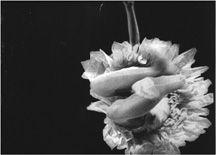
5.118 René Clair in
Entr’acte
frames a ballerina from straight below, transforming the figure into an expanding and contracting flower.
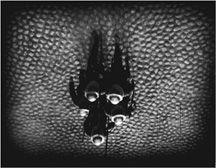
5.119
La Passion de Jeanne d’Arc.
Framing may be used for comic effect, as Charlie Chaplin, Buster Keaton, and Jacques Tati have all shown. We have seen that in
Our Hospitality
Keaton stages many gags in depth. Now we can see that well-chosen camera angles and distances are also vital to the gags’ success. For example, if the railroad scene shown in
4.163
were shot from the side and in extreme long shot, we would not see so clearly that the two parts of the train are on parallel tracks. Moreover, we could not see the engineer’s unconcerned posture, which indicates his failure to realize what has happened. Similarly, the use of framing to create offscreen space is vital to the gag shown in
4.172
and
4.173
. Here the gag is laid out in time rather than space. First Willie tugs on the rope; then an unseen effect of that tug becomes visible as the Canfield son hurtles past and disappears. Finally, Willie reacts and is himself dragged down into the abyss below the frameline. Try to imagine these moments and others in
Our Hospitality
framed in a different way, and you will see how our reaction to Keaton’s humor depends on the careful combination of mise-en-scene and framing.
Similarly, in Tati’s
Play Time,
mise-en-scene and camera position cooperate to create pictorial jokes
(
5.120
).
The visual pun issues from the precisely chosen camera angle and distance, as well as from the mise-en-scene: the man’s stooping posture and the door handles make him look like a goat. We cannot classify all the non-narrative functions of framing; we can only suggest that camera angle, level, height, and distance have the constant possibility of sharpening our awareness of purely visual qualities.
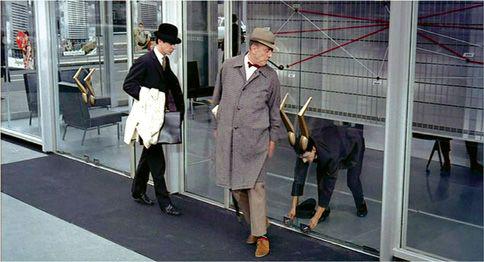
5.120 In
Play Time,
M. Hulot reacts with a start when he notices that a man locking a door seems suddenly to have sprouted horns (the door handles)
CONNECT TO THE BLOG
We analyze subtleties of framing in films by two masters, William Wyler and Kenji Mizoguchi, in “Sleeves.”
All of the features of framing we have examined are present in paintings, photographs, comic strips, and other sorts of pictures. All images furnish instances of aspect ratios, in-frame and out-of-frame relations, angle, level, height, and distance of the frame’s vantage point. But there is one resource of framing that is specific to cinema (and video). In film, it is possible for the frame to
move
with respect to the framed material.
Mobile framing
means that the framing of the object changes. The mobile frame changes the camera angle, level, height, or distance
during
the shot. Further, since the framing orients us to the material in the image, we often see ourselves as moving
along with
the frame. Through such framing, we may approach the object or retreat from it, circle it, or move past it.
We usually refer to the ability of the frame to be mobile as
camera movement.
A mobile frame is usually achieved by moving the camera physically during production. There are several kinds of camera movement, each a specific effect onscreen.
